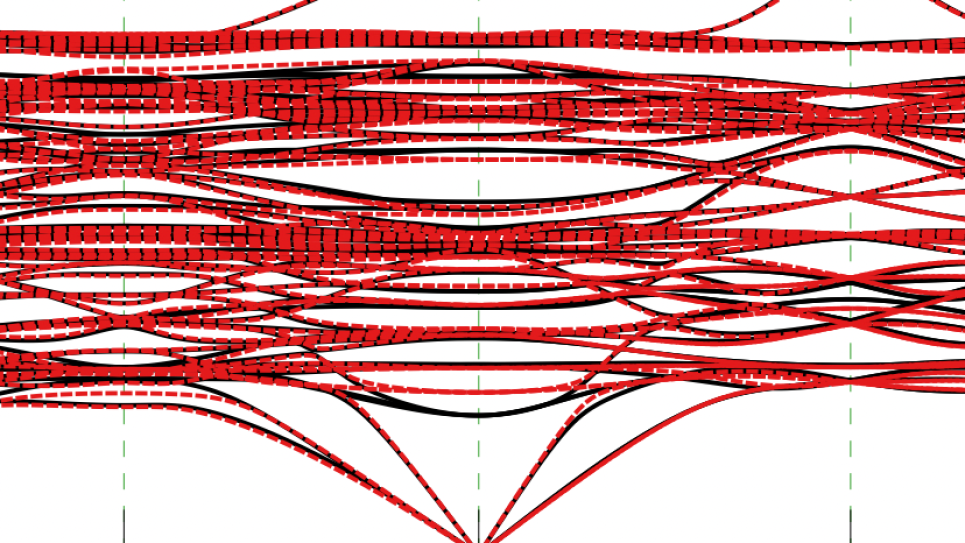
Comparison of phonon band structures calculated with CSLD vs. via traditional finite
displacement method using Phonopy for a diverse set of materials.
With this INCITE project, the researchers aim to address the above-mentioned limitations of currently available computational materials databases by vastly extending the range of materials properties such databases contain.
Large-scale electronic structure calculations using density functional theory (DFT) have become an important workhorse in computational materials science. Increasing amounts of computed materials properties are being stored in large databases, which serve as a basis for many data-mining and machine-learning efforts to design novel functional materials. Materials Project, AflowLib, and the Open Quantum Materials Database (OQMD) are only a few of the largest and most popular computational materials databases available to date. Data-driven materials design projects have recently not only led to the discovery of novel, improved materials, but also to a better understanding of the complex relationship between atomic structure and materials properties. However, the materials properties currently contained in these databases are limited to those obtained by rather simple ground state calculations—such as formation energies, electronic band-gaps, and structures—with no dynamical information. This poses a crucial limitation when it comes to the prediction of materials at ambient or higher temperatures. It is well known that effects arising from finite temperature are important for many materials properties such as electronic and heat transport, polymorphism, and dynamic stability, among others.
This work will include dynamical data obtained from lattice dynamics calculations in a high-throughput fashion. Prohibitively expensive, conventional methods had so far prevented the calculation of force constants from DFT on a routine basis, but recent advances in modeling techniques finally bring this endeavor within reach.
For the very first time, the researchers will employ a highly efficient compressive sensing lattice dynamics technique on a large scale to extract both harmonic and anharmonic force constants up to the fourth order at a fraction of the computational cost compared to conventional methods. Single-point DFT calculations on several large super cells will be performed for each compound to generate the fitting data. The force constants will then be readily useable for computing a variety of material properties, such as free energy, entropy, phonon dispersion, lattice thermal conductivity, and many more.